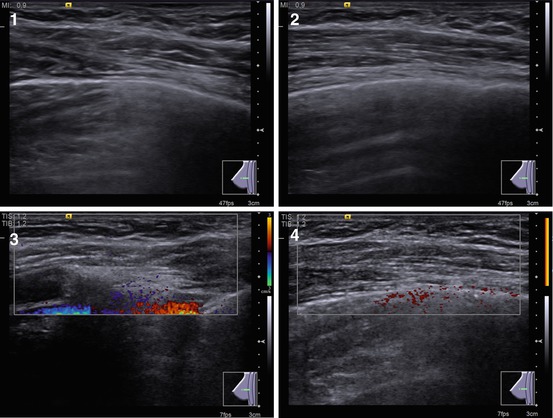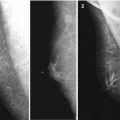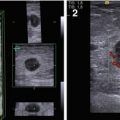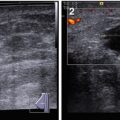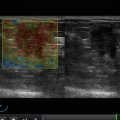Fig. 2.1
Typical breast anatomy. (a) Photo. (b) Scheme
Breasts in men and women have the same origin and development until puberty. They originate from the fourth pair of lactiferous points. Development starts during the fourth week of gestation with the growth of a basic milk streak. Milk lines, “ventral epidermal ridges,” are seen by the sixth week of the embryo’s life. Glands and their ducts develop separately. The development progresses in women, whereas in men, the progress stops. Some people have several pairs of breast germs within the milk lines, although not all of them develop completely after birth.
The nipple and areola in men are small in size. The nipples are located on the midclavicular lines; their heights are 2–5 mm. The lobules and ducts are short and not developed. The size and shape of the breasts are variable and depend on the age, development of subcutaneous fat, and constitutional features. The nipple is located in the center of the breast and consists of muscular and epithelial tissues. It is surrounded by the areola, a pigmented skin area with multiple sweat glands. The breast is bordered by the anterior and posterior leaf of the superficial fascia of the thorax. Adipose tissue can be observed as subcutaneous fat and fatty lobes, which are surrounded with connective tissue fibers. The breast capsule is formed by connective tissue and fixed to the pectoral fascia.
The breast is highly vascular and is supplied by the branches of the internal thoracic, subclavian, axillary, and intercostal arteries that form the rete of anastomoses, predominantly in the subareolar area (Fig. 2.2). The venous rete accompanies the corresponding arteries and arterioles.
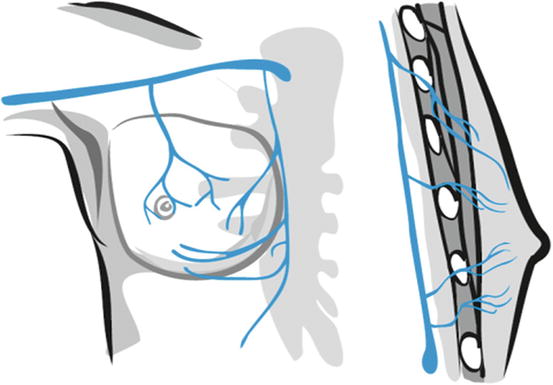

Fig. 2.2
Male breast vessels
The lymphatic system is comprised of intramammary and abducent lymph ducts and regional lymph nodes, the latter conferring axillary, subclavian, supraclavicular, pectoral, and substernal groups. Intramammary lymph ducts form a complex rete with anastomoses and plexuses. Breast innervation is provided by the branches of thoracic, humeral, and intercostal nerves (Bazhenova et al. 1985).
2.2 Development and Physiology of the Breast in Boys
Breast tissue at birth is identical in boys and girls. Breasts in girls and boys from birth to puberty are represented by matrix (fragments of glandular tissue and ducts in germinal status) surrounded with adipose and connective tissue. Breast of both genders are identical until 7–8 years of age (Figs. 2.3 and 2.4).
